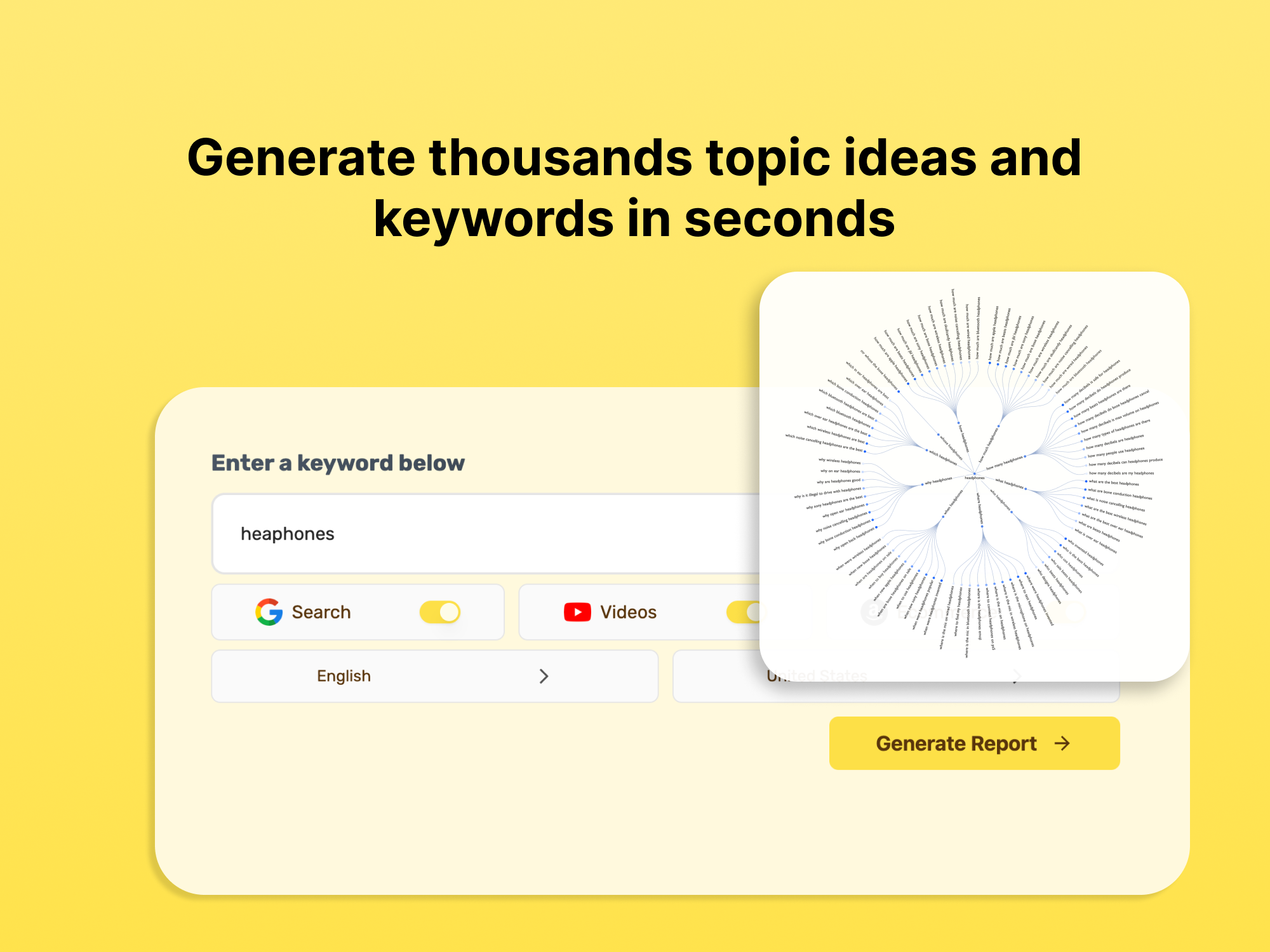
How to Derive Customer Behavior from Search Insights
Understand Your Audience Better with Search Data Analysis
By Shishir
Published on
10 minutes
Table of Contents
Understanding customer behavior is crucial for businesses aiming to tailor their marketing strategies and improve overall customer experience. By leveraging search insights, companies can gain valuable information about what drives customer decisions, preferences, and pain points. This article explores how businesses can derive customer behavior from search insights, utilizing tools like AnswerThePublic and other analytical methods.
The Importance of Understanding Customer Behavior
Customer behavior analysis involves examining how customers interact with your brand, including their purchasing habits, preferences, and responses to marketing efforts. Understanding these behaviors is essential for several reasons:

- Improved Marketing Strategies: By understanding what customers are searching for and how they behave online, businesses can create targeted marketing campaigns that resonate with their audience.
- Enhanced Customer Experience: Insights into customer behavior allow companies to personalize their offerings, improving customer satisfaction and loyalty.
- Informed Product Development: Analyzing search insights helps identify gaps in the market and informs product development based on actual customer needs.
- Competitive Advantage: Understanding customer behavior relative to competitors enables businesses to differentiate themselves in the market.
Utilizing Search Insights for Customer Behavior Analysis
1. Keyword Research
Keyword research is a foundational step in understanding customer behavior through search insights. By analyzing the keywords that potential customers use, businesses can gain insight into their interests and needs.
- Tools for Keyword Research: Utilize tools like Google Keyword Planner, SEMrush, or Ahrefs to identify popular search terms related to your industry. Pay attention to long-tail keywords, as they often indicate specific customer intents.
- Search Volume and Trends: Look at the search volume for these keywords over time to identify trends in consumer interest. Seasonal spikes or declines can provide insights into purchasing behaviors related to specific times of the year.
2. Searchlens for Enhanced Insights
One powerful tool for deriving customer behavior insights is Searchlens. This platform allows businesses to visualize the questions and phrases people are searching for related to specific keywords. For more information, visit the Searchlens home page.

- Understanding Customer Questions: By entering a keyword into Searchlens, you can see a wide array of questions that users are asking about that topic. For example, if your business sells fitness equipment, you might find questions like “What is the best treadmill for home use?” or “How often should I exercise?”
- Content Creation Opportunities: These questions can guide content creation efforts. By addressing common queries in your blog posts or FAQs, you can attract more traffic and engage customers effectively.
- Identifying Pain Points: The questions generated can also reveal pain points or concerns customers have regarding products or services in your industry. Addressing these issues directly in your marketing materials can enhance customer trust and engagement.
3. Analyzing Competitor Behavior
Another effective method for deriving customer behavior insights is analyzing competitors’ strategies:
- Competitor Keyword Analysis: Use tools like SEMrush or Ahrefs to see which keywords your competitors rank for and how much traffic they receive from those keywords. This analysis can highlight potential gaps in your own strategy.
- Content Strategy Review: Examine the type of content competitors produce and how it performs. Are they focusing on blogs, videos, or infographics? What topics generate the most engagement? This information can help you refine your content strategy.
- Social Media Engagement: Monitor how competitors engage with their audience on social media platforms. Analyze which posts receive the most interaction and what types of content resonate with users.

4. Gathering Qualitative Data
While quantitative data (like search volume) provides valuable insights, qualitative data is equally important for understanding customer behavior:
- Customer Feedback: Collect feedback through surveys or reviews to understand customer sentiments about your products or services. This feedback can highlight areas for improvement and inform future marketing strategies.
- Social Listening: Utilize social listening tools to monitor conversations about your brand or industry on social media platforms. Understanding public sentiment can provide deeper insights into customer attitudes and preferences.
5. Analyzing Website Behavior
Website analytics offer a wealth of information about how customers interact with your online presence:
- Google Analytics: Use Google Analytics to track user behavior on your website, including page views, bounce rates, and conversion rates. Analyzing these metrics helps identify which pages are performing well and which may need optimization.
- User Flow Analysis: Examine user flow reports to understand how customers navigate through your site. Identifying where users drop off in the purchasing process can reveal barriers that need addressing.

Turning Insights into Action
Once you’ve gathered insights from search data and other sources, it’s essential to turn this information into actionable strategies:
- Personalized Marketing Campaigns: Use the insights gained from keyword research and customer feedback to create personalized marketing campaigns that address specific needs and preferences.
- Content Optimization: Develop content that answers common questions identified through tools like AnswerThePublic. This not only improves SEO but also positions your brand as a helpful resource in your industry.
- Product Development: Leverage insights about customer pain points to inform product development decisions. Creating solutions that address these issues can lead to increased sales and customer satisfaction.
- Continuous Monitoring: Regularly analyze search data and customer feedback to stay updated on changing behaviors and preferences. This ongoing analysis will help you adapt your strategies as needed.
Conclusion
Deriving customer behavior from search insights is a powerful way to enhance marketing strategies, improve customer experience, and drive business growth. By utilizing tools like AnswerThePublic alongside competitor analysis and website behavior tracking, businesses can gain a comprehensive understanding of their customers' needs and preferences. Implementing these insights into actionable strategies will not only improve engagement but also foster long-term loyalty among customers in an increasingly competitive market.